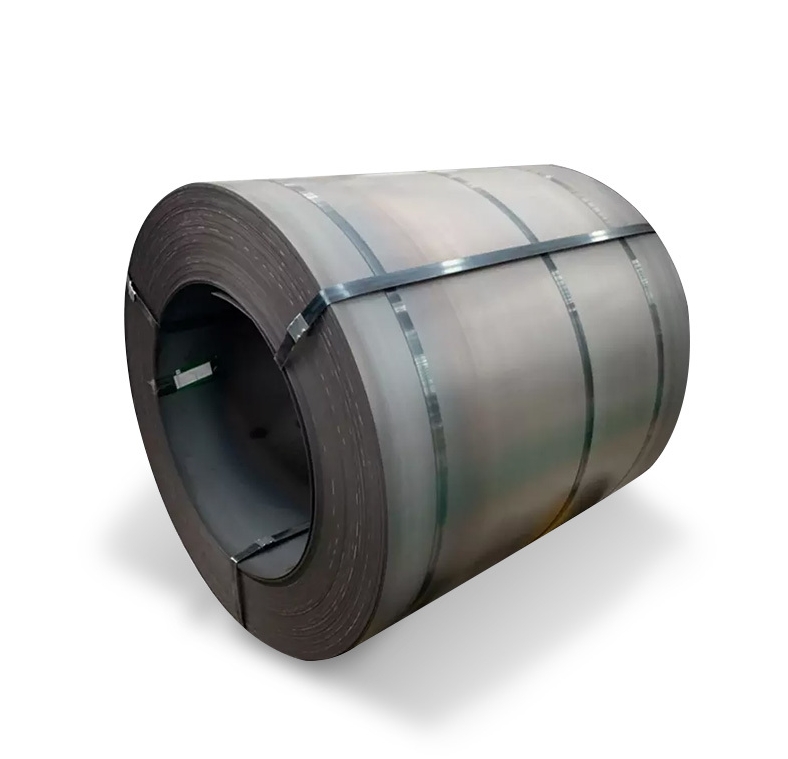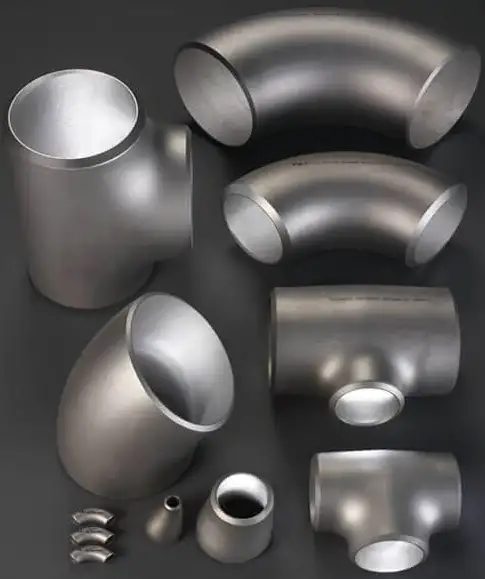S620QL1 is a quenched-and-tempered, fine-grain structural steel with a minimum yield of 620 MPa, designed for cryogenic/low-temperature service down to −60 °C in its highest-toughness grade. In 2025 typical market prices for S620-class quenched & tempered plates vary widely by region and supply chain conditions — roughly USD 520–1,200 / tonne depending on origin, thickness, mill testing, and order size. We supply S620QL1 from China under brand Luokaiwei with fast stock delivery, OEM customization and factory-direct pricing that is typically below western mill list prices.
What is S620QL1?
S620QL1 is part of the EN 10025-6 family: quenched and tempered high-yield structural steels. The “S” denotes structural steel, “620” the minimum yield strength in MPa, “Q” indicates the quenched & tempered delivery condition, and the “L1” suffix denotes an extra-toughness variant (lowest specified impact temperature). This grade is used when designers require high strength combined with good notch toughness at sub-zero temperatures.
Chemical composition
Standards and mill datasheets list maximum values for critical elements. A typical S620QL1 composition window (max values) is:
-
C ≤ ~0.20–0.22%
-
Si ≤ ~0.80–0.86%
-
Mn ≤ ~1.7–1.8%
-
P, S very low (P ≤ ~0.020–0.03%, S ≤ ~0.010–0.017%)
-
Alloying elements: Cr, Ni, Mo, Cu, Nb, Ti, V in small quantities according to supplier recipe
These limits are set to balance hardenability and weldability while enabling the specified impact performance. Exact mill chemistry must be taken from the mill test certificate (EN 10204 3.1 / 3.2) at time of order.
Mechanical properties
Minimum guaranteed mechanical values for S620QL1 (typical as-delivered, thickness-dependent):
-
Yield strength (ReH): ≥ 620 MPa (thin sections typically ≥620; thicker sections may have slightly lower guaranteed ReH depending on the standard table)
-
Tensile strength: generally in the 700–890 MPa window for thinner plates; reduces modestly as thickness increases
-
Elongation (A): typically ≥12–15% (depends on thickness)
Because EN tables are thickness-sensitive, always check the exact clause in EN 10025-6 or the mill’s certificate.
Toughness classes: Q / QL / QL1
EN 10025-6 breaks out Q, QL and QL1 grades by the minimum impact energy and specified lowest test temperature:
-
S620Q — standard toughness (tested to around −20 °C)
-
S620QL — improved toughness (tested to around −40 °C)
-
S620QL1 — extra toughness (tested to around −60 °C) — this is the L1 level most projects specify when very low ambient or cryogenic behavior is required.

Heat treatment & production route
S620QL1 is produced by controlled quench and temper (QT). Typical production steps:
-
Hot rolling to near final gauge.
-
Controlled cooling/quenching to obtain a martensitic–bainitic structure.
-
Tempering to achieve desired toughness and ductility while holding yield above 620 MPa.
Heat treatment records, cooling path (t8/5 times), and hardness tests are critical acceptance items. For thick plate (>50–100 mm) mills will often provide additional test evidence for toughness and hardness.
Welding, preheat and fabrication
We advise project teams to treat S620QL1 like other high-strength quenched & tempered steels:
-
Check Carbon Equivalent (CE) from the MTC and calculate preheat/interpass limits.
-
Follow qualified welding procedures (WPS/PQR). Low hydrogen consumables and controlled interpass temperatures are recommended.
-
Post-weld heat treatment (PWHT) is generally not recommended unless specified, since PWHT can reduce the tempered martensitic toughness; design weld procedures to meet impact requirements without PWHT where possible.
-
For heavy-section fabrications, use layered welding and staged heat control to avoid overtempering.
Always verify weldability with the supplier and request the mill’s welding guidelines and CE values.
Corrosion & surface protection
S620QL1 is not a stainless alloy — corrosion protection is normally required for exposed service:
-
Common systems: abrasive blast + primer + epoxy/urethane topcoat; metallizing; or hot-dip galvanizing after fabrication (consider thickness and distortion).
-
For marine or offshore environments, specify NACE/ISO coatings per project.
-
Mill coatings (oiled finish) only protect during storage/transport; they are not permanent corrosion protection.
Consider specifying surface prep and coating acceptance in the purchase order to avoid scope gaps.
Typical applications & industries
Because of its strength and low-temperature toughness, S620QL1 is used in:
-
Bridges and large structural members where weight reduction is needed.
-
Heavy equipment (cranes, loaders, excavators) and mobile platforms.
-
Offshore and subsea structures where low-temperature toughness and high strength are required.
-
Pressure components where design codes permit the use of high-strength QT plate (with appropriate testing).
Standards, tests and inspection requirements
Key documents and checks for procurement:
-
EN 10025-6 (technical delivery conditions for quenched & tempered flat products) — the primary standard for S620Q(SL) family.
-
Mill Test Certificate (EN 10204 3.1/3.2): chemical, mechanical, impact (temperature & energy), heat treatment record.
-
Impact testing at specified temperatures (down to −60 °C for QL1).
-
Hardness testing for very thick plates to ensure tempering and over-hardness limits.
-
Traceability and non-destructive examination (NDE) if required by project spec.
Specifying acceptance criteria up front prevents costly rejections at site.
Price drivers in 2025 (what moves S620QL1 plate price)
The plate price in 2025 depends on:
-
Hot-rolled slab and scrap feedstock costs (global commodity swings).
-
Alloying additions (Ni, Mo, Cr) — although S620 recipes limit high percentages, small additions can move cost.
-
Energy and gas costs for heat treatment and rolling.
-
Testing and certification: QL1 requires low-temperature impact testing which increases test scope & cost versus ordinary structural steel.
-
Logistics and freight (ocean freight volatility), plus trade measures and tariffs.
-
Thickness, width, mill, and order quantity — thin, common sizes are cheaper per tonne than very thick, large-section plate; short lead times or small lots raise unit price.
-
Market cycles — steel index moves in 2025 show regional variance; buyers should expect 10–30% spreads between low-cost Asian mills and western mills when logistics and testing are included.
Global price comparison (indicative ranges, 2025)
Important: the numbers below are indicative FOB/EXW ranges aggregated from supplier listings, market indexes and trade portals in mid-2025. Use them to budget; request live quotes for firm purchasing decisions.
| Region / Typical port | Indicative price (USD / tonne) | Notes / source |
|---|---|---|
| China — mill / exporter (hot-rolled S620QL1) | USD 520 – 950 / t | Many China suppliers list S620 family in mid-range bands; low end for bulk black plate, higher for certified QL1 with -60°C impact tests. |
| India — FOB (selected traders) | USD 800 – 1,600 / t | Indian suppliers and trading portals show wider spreads depending on test scope and export packaging. |
| Europe (EU mills / traders) | USD 1,000 – 1,400 / t | European list prices and plate market indexes for specialty QT plates trend higher because of stricter mill testing and labor/energy cost. |
| USA / North America (domestic mill / plate) | USD 900 – 1,300 / t | Domestic plate markets and distributors report plate indexes around USD ~1,000/t for steel plate families; premium applies for QL1 testing and certified mills. |
| Gulf / Middle East (imported) | USD 850 – 1,250 / t | Prices driven by FOB origin plus freight; local demand and project timelines matter. (see regional trade portals) |
How to read this table: lower figures assume bulk purchase of standard QC paperwork (3.1) and basic cut sizes; top of ranges include full QL1 impact testing to −60 °C, certified third-party inspection and packaging. Prices can change daily with slab/scrap indices and shipping cost.
Buying & specification checklist (how we sell S620QL1 at Luokaiwei)
When you contact us, we recommend specifying:
-
Exact EN designation (S620QL1) and the required impact test temperature (−60 °C).
-
Thickness / width / length: plate size drives mill rolling schedule and cost.
-
Quantity / delivery terms: EXW, FOB, CIF — we offer factory EXW and competitive FOB terms from China.
-
Certificates required: EN 10204 3.1 or 3.2, hardness, impact test records, heat treatment chart.
-
Welding and fabrication constraints: request the mill’s welding bulletin and recommended consumables.
-
Surface finish & packing: oiled, coated, or blasted & primed; palletized or loose.
We at Luokaiwei typically quote with factory-direct pricing (we manufacture and maintain stock for popular thicknesses), support customization (cut-to-length, edge milling, certified heat treatment documentation) and can expedite stock items for fast delivery.
Short case example (delivery & lead time)
We supplied S620QL1, 20–40 mm plates, to an offshore contractor in Europe in 2025:
-
Quantity: 40 tonnes.
-
Tests: full EN 10204 3.1, impact tests to −60 °C on representative coupons.
-
Lead time: stock delivery 3–5 weeks (including test reports), FOB Shanghai.
-
Price: competitive against local offers due to factory pricing and consolidated logistics.
This shows how factory inventory plus clear specification compresses lead time and reduces surprises.
Purchasing risks & mitigation
-
Risk: vendor offers low price but lacks full QL1 impact evidence. Mitigation: insist on EN 10204 certificate and impact test reports to −60 °C.
-
Risk: freight or tariffs add unexpected cost. Mitigation: request CIF/FOB breakdown and confirm Incoterms.
-
Risk: mismatch between design spec and actual delivered thickness or hardness. Mitigation: supply sample acceptance criteria and third-party inspection if required.
FAQs
Q1 — Is S620QL1 the same as S620Q?
No. S620Q family includes Q, QL and QL1. QL1 has the most demanding impact spec (commonly tested down to −60 °C) and so commands a premium versus standard S620Q.
Q2 — Can S620QL1 be welded without PWHT?
Yes — typical practice is to use qualified WPS with controlled preheat/interpass and low-hydrogen consumables rather than PWHT (which may reduce the tempered structure). Follow the mill’s weld bulletin and project welding code.
Q3 — How much stronger is S620QL1 than S355?
S620QL1 has a minimum yield of ~620 MPa, compared with S355 (~355 MPa). That means for the same section a designer can reduce member size or weight — but high-strength steel requires careful design for fatigue, welds and toughness.
Q4 — Are prices quoted per tonne or per square meter?
Standard commercial practice is USD per metric tonne or per piece (for cut plates). Some buyers price by area for thin plate — always confirm units when comparing quotes.
Q5 — Why are Chinese S620QL1 prices lower than European mills?
Multiple reasons: lower labor & energy cost, different overheads, and competitive export drive; however, full QL1 testing, third-party inspection and logistics can narrow the gap when comparing delivered cost. Always compare delivered cost with equivalent documentation.
How Luokaiwei helps procurement teams
We position Luokaiwei as a manufacturing supplier in China that specializes in high-strength plates. Our selling points:
-
Factory-direct pricing — we avoid extra distributor margins so buyers get lower EXW/FOB base figures.
-
Customization — cut-to-size, edge-preparation, NDE, special packaging.
-
Stock & fast delivery — for common thicknesses we maintain inventory to cut lead time.
-
Documentation — we provide EN 10204 3.1/3.2, impact tests, hardness records, and welding guidance.
If you want a formal quotation, tell us: required quantity, plate sizes, impact temperature, and desired Incoterm; we will respond with mill lead time, packing, and firm price.
Closing notes
S620QL1 is a robust choice when designers require both high yield and low-temperature toughness. In 2025 the market shows significant regional spreads; careful specification (tests, certificates, logistics) is essential to compare total delivered cost. When procuring, always prioritize the test scope and traceability over a superficially low unit price.








